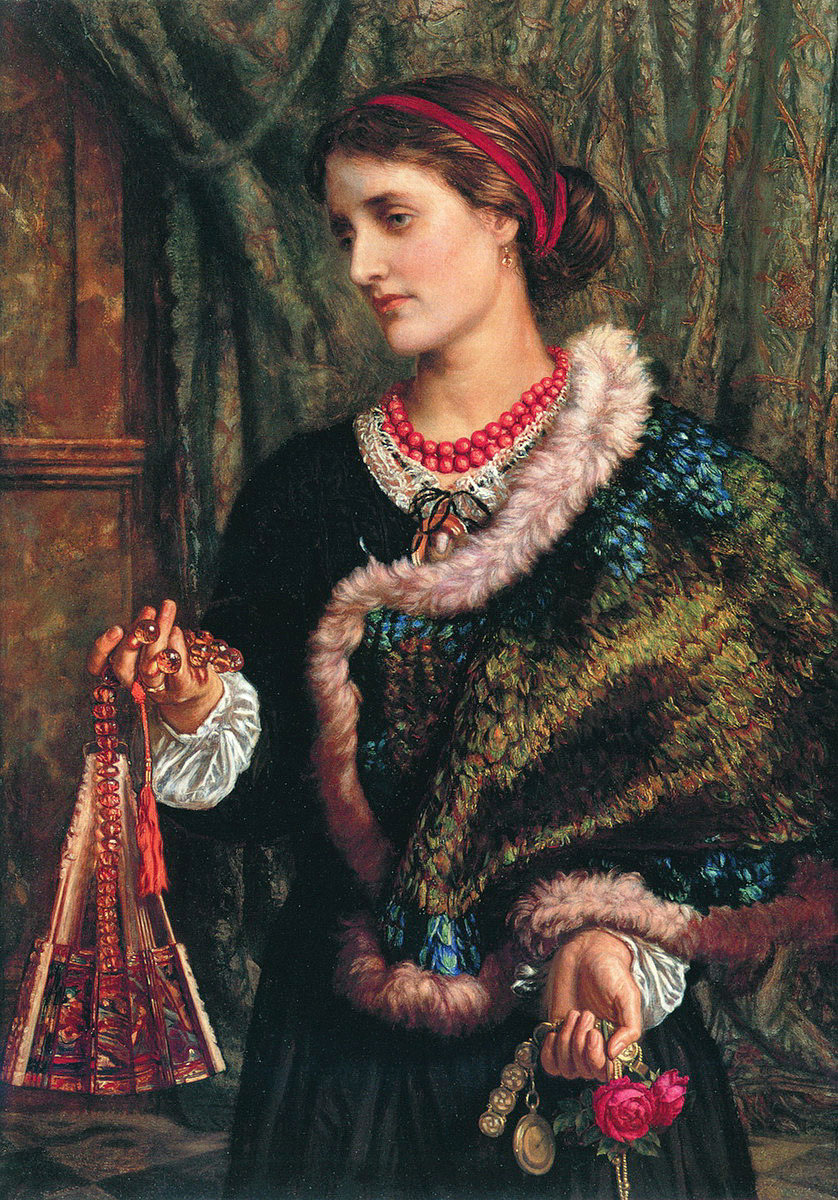From June 14 to September 6 2009 the Minneapolis Institute of Arts (MIA) offered visitors a rare glimpse into the life and work of 19th-century painter William Holman Hunt, with an exhibition of more than 60 iconic works by the artist who is considered to be the founder of the Pre-Raphaelite Brotherhood and has been deemed by some as the Damien Hirst of his day. Sin & Salvation: William Holman Hunt and the Pre-Raphaelite Vision featured Holman Hunt's most celebrated works, including The Light of the World, The Lady of Shalott, The Awakening Conscience, and The Finding of the Savior in the Temple, which had never before been shown outside of Britain. The MIA was the sole U.S. venue.
Sin & Salvation provided a new interpretation of Holman Hunt's work, revealing an artist who confronted the pivotal issues of his day: materialism, the crisis of faith, the changing role of women, and the relationship between the sexes. These themes, with their roots in the Victorian era, continue to resonate strongly with 21st-century audiences.
The exhibition included works by other leading Pre-Raphaelites such as Dante Gabriel Rossetti, John Everett Millais, and their associates Arthur Hughes and Ford Madox Brown, as well as textiles used as props in Holman Hunt's studio.

An agnostic in his early years, Holman Hunt experienced a spiritual awakening while painting the first version of his most famous painting, The Light of the World, which is based on Revelations 3:30. Painted in an orchard by moonlight, the picture represents Christ knocking on the door of a musty garden shed that symbolizes a human soul. His lantern spreads spiritual light in a darkened world. This ingenious and optimistic depiction was one of the most admired images of Protestant faiths in the nineteenth century.

Holman Hunt created dramatic narratives in which independent women struggle with moral, emotional and spiritual issues. Like Victorian literature, his compositions are full of detail, clues and symbols. His first mistress, Annie Miller, was the model for the woman pictured in The Awakening Conscience (1853-54). She suddenly rises, from her wealthy lovers lap, struck with conscience. In this companion picture to The Light of the World the woman's conscience is awakened when she hears Christ knocking at the door of her soul. Every object in this stylish Victorian interior reinforces the theme of a kept woman.

Following an admonishment by Scottish writer Thomas Carlyle to create a veritable contemporary representation of Jesus Christ, Holman Hunt traveled to Cairo and Jerusalem in 1854, where he created the monumental Afterglow in Egypt. Struck by the quality of light in the Near East, he also executed a series of brilliant topographical watercolors, many of which are included in the show. He was immersed in the biblical archaeology of Jerusalem, intensifying his faith and helping him to visualize the events of Christs life in more vivid detail. The two icons of religious genre to result from this initial visit, The Finding of the Savior in the Temple and The Scapegoat, are suffused with symbolism, yet represented in archaeologically convincing settings.

In his 1842 ballad, The Lady of Shalott, Alfred Lord Tennyson invented a tragic heroine who records the events of King Arthurs reign in a woven tapestry. She is sequestered in her chamber and is allowed to view the outside world only through reflections in a mirror. Two depictions of this allegorical poem are included in the exhibition. Although highly finished, the smaller example served primarily as a preparatory study for the larger picture, one of Holman Hunt's most complex and extraordinary conceptions. Holman Hunt worked and reworked this picture over a decade, finishing it with studio assistance just before going blind.

The Birthday (1868) is a striking portrait of the artist's sister-in-law, Edith Waugh, on her twenty-first birthday, surrounded by gifts. They include a cameo, which Holman Hunt had originally given to his first wife, Fanny Waugh, Edith's sister. After Fanny died, Holman Hunt married Edith, whereupon he inscribed Fannys cameo with Edith's name. In the picture, Edith is in mourning dress, after the loss of her sister, although her appearance is much enlivened by a peacock-feather cape edged with white swans-down. Gradually Edith became indispensable to him, looking after his son and managing his affairs.
About William Holman Hunt
Born in 1827 in London, William Holman Hunt attended the Royal Academy in 1844, where he met John Everett Millais and Dante Gabriel Rossetti. In 1848 these three artists formed the Pre-Raphaelite Brotherhood, which broke with academic tradition and developed a distinctive medievalizing style characterized by bright colors and hyperrealism. The group challenged the artistic, political, social, and religious values of the time, taking subjects from history, literature, and modern life. Although the group was short-lived, its impact was far-reaching.
Holman Hunt remained true to the original Pre-Raphaelite vision throughout his long career. His paintings are notable for their meticulous attention to detail, luminous and vibrant colors, and elaborate symbolism. In his attempt to revive the brilliance of color found in 15th century Italian art, he developed a technique of painting in thin glazes of pigment over a wet white ground to retain a jewel-like transparency and clarity of color. To share his vision with vast audiences, he became involved in printmaking and actively oversaw the engraved reproduction of his images.

Patrick Noon, Chair of Paintings & Modern Sculpture at the MIA, was curator of the exhibition in Minneapolis. A fully illustrated catalogue published by the Art Gallery of Ontario accompanied the exhibition. The exhibition was organized by the Art Gallery of Ontario, in association with Manchester Art Gallery, England.